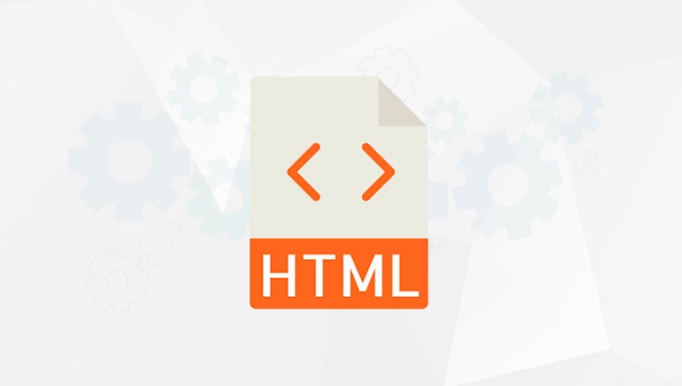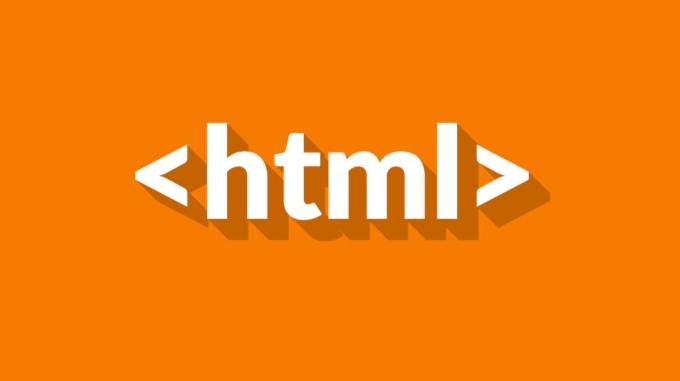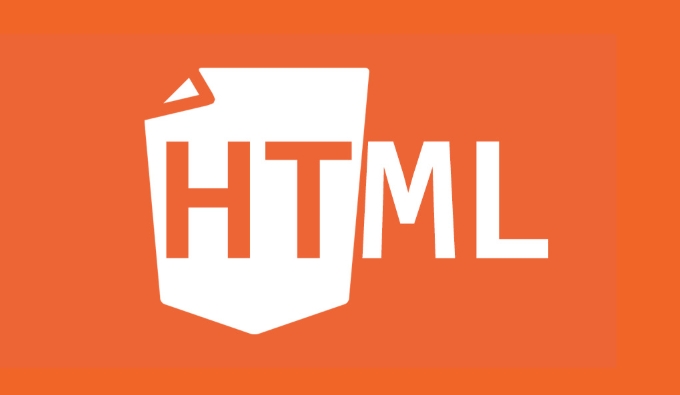How to handle forms submission in HTML without a server?
Jul 09, 2025 am 01:14 AMWhen there is no backend server, HTML form submission can still be processed through front-end technology or third-party services. Specific methods include: 1. Use JavaScript to intercept form submissions to achieve input verification and user feedback, but the data will not be persisted; 2. Use third-party serverless form services such as Formspree to collect data and provide email notifications and redirect functions; 3. Use localStorage to store temporary client data, which is suitable for saving user preferences or managing single-page application status, but is not suitable for long-term storage of sensitive information.

When processing HTML form submissions, if you don't have a backend server, it does have restrictions, but it doesn't mean it's completely unprocessable. You can use some front-end technologies or third-party services to implement basic data collection, verification and user feedback functions.

Here are some common and practical methods:

Process form data locally using JavaScript
If you just want to do some simple logical processing on the page, such as verifying input and displaying feedback information, without storing data, you can use JavaScript to intercept form submission behavior.
<form id="myForm">
<input type="text" id="name" required />
<button type="submit">Submit</button>
</form>
<script>
document.getElementById("myForm").addEventListener("submit", function (e) {
e.preventDefault(); // Prevent the default commit behavior const name = document.getElementById("name").value;
alert("The name you entered is:" name);
});
</script>This method is suitable for:

- Show prompt information
- Do client verification (such as checking the mailbox format)
- Simulate submission process
The disadvantage is: the data will not be saved, and the page will be gone if it is refreshed.
Take advantage of third-party serverless form services
If you need to actually collect data and don't want to set up a server by yourself, you can use some third-party form collection services, which usually offer free tiers that can be embedded directly into HTML forms.
Common ones are:
Taking Formspree as an example, the usage method is very simple:
<form action="http://miracleart.cn/link/fd40463bdad3ce3d82883121161c416ef/your-form-id" method="POST"> <input type="text" name="name" /> <input type="email" name="_replyto" /> <button type="submit">Submit</button> </form>
Features include:
- Automatically send email notifications after submission
- Redirect pages can be set
- Free amount is sufficient for personal projects
Note: You need to register an account and verify your email address to receive data.
Store to browser local (localStorage)
If you want the data to be retained after the page is refreshed, you can combine JavaScript and localStorage to implement temporary storage.
<form id="myForm">
<input type="text" id="name" />
<button type="submit">Submit</button>
</form>
<script>
document.getElementById("myForm").addEventListener("submit", function (e) {
e.preventDefault();
const name = document.getElementById("name").value;
localStorage.setItem("userName", name);
alert("name saved");
});
// Read window.onload = function () {
const savedName = localStorage.getItem("userName");
if (savedName) alert("The last time I entered was: " savedName);
};
</script>This method is suitable for:
- Save user preference settings
- State management of single page applications
- Temporary data cache in offline scenarios
But it is not suitable for long-term storage of sensitive information.
In general, although you cannot do a complete back-end processing without a server, with the help of front-end technology and third-party tools, you can still complete form interaction, verification, and even data collection tasks.
Basically, just choose the right solution according to your specific needs.
The above is the detailed content of How to handle forms submission in HTML without a server?. For more information, please follow other related articles on the PHP Chinese website!

Hot AI Tools

Undress AI Tool
Undress images for free

Undresser.AI Undress
AI-powered app for creating realistic nude photos

AI Clothes Remover
Online AI tool for removing clothes from photos.

Clothoff.io
AI clothes remover

Video Face Swap
Swap faces in any video effortlessly with our completely free AI face swap tool!

Hot Article

Hot Tools

Notepad++7.3.1
Easy-to-use and free code editor

SublimeText3 Chinese version
Chinese version, very easy to use

Zend Studio 13.0.1
Powerful PHP integrated development environment

Dreamweaver CS6
Visual web development tools

SublimeText3 Mac version
God-level code editing software (SublimeText3)

Hot Topics
 Explain the purpose of the role attribute in ARIA.
Jun 14, 2025 am 12:35 AM
Explain the purpose of the role attribute in ARIA.
Jun 14, 2025 am 12:35 AM
ARIA's role attribute is used to define the role of web elements and improve accessibility. 1. Role attribute helps assistive technology to understand the functions of elements, such as buttons, navigation, etc. 2. Use role attributes to assign specific roles to non-semantic HTML elements. 3. The role attribute should be consistent with the element behavior and be verified by the accessibility tool test.
 HTML and Design: Creating the Visual Layout of Websites
Jun 14, 2025 am 12:39 AM
HTML and Design: Creating the Visual Layout of Websites
Jun 14, 2025 am 12:39 AM
How to create a website layout? 1. Use HTML tags to define the content structure, such as, ,. 2. Control styles and positions through CSS, using box model, float or Flexbox layout. 3. Optimize performance, reduce HTTP requests, use cache and optimize images, and ensure responsive design.
 How can you ensure your HTML code is readable and maintainable?
Jun 10, 2025 am 12:06 AM
How can you ensure your HTML code is readable and maintainable?
Jun 10, 2025 am 12:06 AM
Improve the readability and maintainability of HTML code can be achieved through the following steps: 1. Use semantic tags, such as, etc. to make the code structure clear and improve SEO effect; 2. Keep the code formatted and use consistent indentation and spaces; 3. Add appropriate comments to explain the code intention; 4. Avoid excessive nesting and simplify the structure; 5. Use external style sheets and scripts to keep the HTML concise.
 How do I stay up-to-date with the latest HTML standards and best practices?
Jun 20, 2025 am 08:33 AM
How do I stay up-to-date with the latest HTML standards and best practices?
Jun 20, 2025 am 08:33 AM
The key to keep up with HTML standards and best practices is to do it intentionally rather than follow it blindly. First, follow the summary or update logs of official sources such as WHATWG and W3C, understand new tags (such as) and attributes, and use them as references to solve difficult problems; second, subscribe to trusted web development newsletters and blogs, spend 10-15 minutes a week to browse updates, focus on actual use cases rather than just collecting articles; second, use developer tools and linters such as HTMLHint to optimize the code structure through instant feedback; finally, interact with the developer community, share experiences and learn other people's practical skills, so as to continuously improve HTML skills.
 How do I use the element to represent the main content of a document?
Jun 19, 2025 pm 11:09 PM
How do I use the element to represent the main content of a document?
Jun 19, 2025 pm 11:09 PM
The reason for using tags is to improve the semantic structure and accessibility of web pages, make it easier for screen readers and search engines to understand page content, and allow users to quickly jump to core content. Here are the key points: 1. Each page should contain only one element; 2. It should not include content that is repeated across pages (such as sidebars or footers); 3. It can be used in conjunction with ARIA properties to enhance accessibility. Usually located after and before, it is used to wrap unique page content, such as articles, forms or product details, and should be avoided in, or in; to improve accessibility, aria-labeledby or aria-label can be used to clearly identify parts.
 How do I create a basic HTML document?
Jun 19, 2025 pm 11:01 PM
How do I create a basic HTML document?
Jun 19, 2025 pm 11:01 PM
To create a basic HTML document, you first need to understand its basic structure and write code in a standard format. 1. Use the declaration document type at the beginning; 2. Use the tag to wrap the entire content; 3. Include and two main parts in it, which are used to store metadata such as titles, style sheet links, etc., and include user-visible content such as titles, paragraphs, pictures and links; 4. Save the file in .html format and open the viewing effect in the browser; 5. Then you can gradually add more elements to enrich the page content. Follow these steps to quickly build a basic web page.
 How do I create checkboxes in HTML using the element?
Jun 19, 2025 pm 11:41 PM
How do I create checkboxes in HTML using the element?
Jun 19, 2025 pm 11:41 PM
To create an HTML checkbox, use the type attribute to set the element of the checkbox. 1. The basic structure includes id, name and label tags to ensure that clicking text can switch options; 2. Multiple related check boxes should use the same name but different values, and wrap them with fieldset to improve accessibility; 3. Hide native controls when customizing styles and use CSS to design alternative elements while maintaining the complete functions; 4. Ensure availability, pair labels, support keyboard navigation, and avoid relying on only visual prompts. The above steps can help developers correctly implement checkbox components that have both functional and aesthetics.
 What is an HTML tag?
Jun 13, 2025 am 12:36 AM
What is an HTML tag?
Jun 13, 2025 am 12:36 AM
HTMLtagsareessentialforstructuringwebpages.Theydefinecontentandlayoutusinganglebrackets,ofteninpairslikeand,withsomebeingself-closinglike.HTMLtagsarecrucialforcreatingstructured,accessible,andSEO-friendlywebpages.






